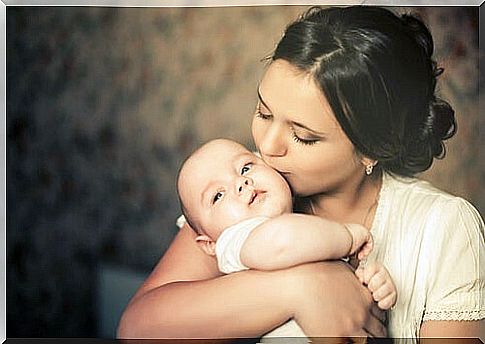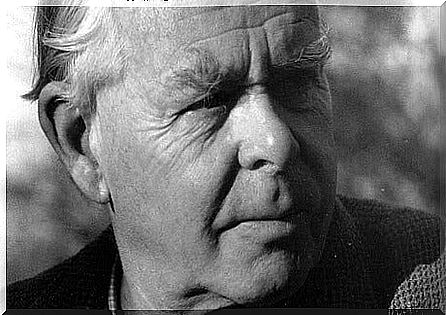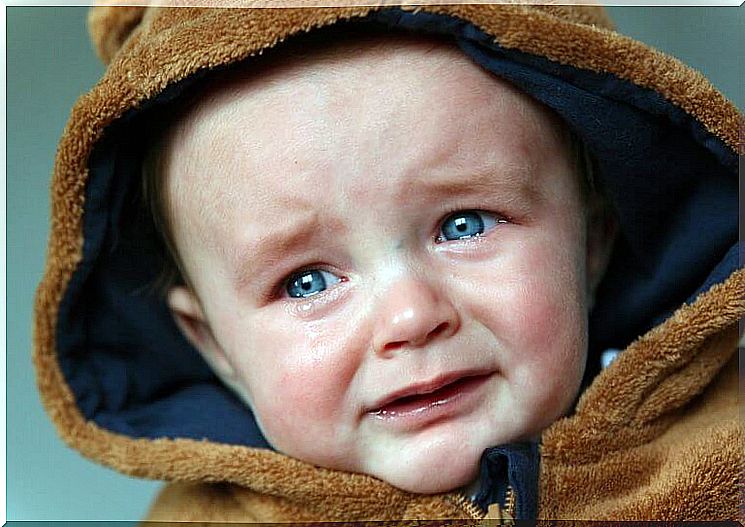The Attachment Theory Of John Bowlby

The psychiatrist and psychoanalyst John Bowlby (1907 – 1990) believed that the causes of mental health and behavioral problems could be attributed to early childhood. In fact, John Bowlby’s attachment theory states that we come biologically pre-programmed to build bonds with others and that they help us survive.
Bowlby was very influenced at a general level by ethological theory, but especially by Konrad Lorenz’s study of imprinting carried out with ducks and geese in the 1950s. From this, Lorenz demonstrated the survival value of the attachment bond by your innate character.
Thus, Bowlby believed that attachment behaviors were instinctive and that their activation depended on any condition that could threaten the achievement of closeness, such as separation, insecurity or fear.
Innate Behaviors for Survival
According to Bowlby, fear of strangers is nothing more than a survival mechanism that babies have innately. That is, babies are born with a tendency to show certain innate behaviors – called social liberators – that help to ensure proximity and contact with the mother or the attachment figure. It would then be an evolutionary question. In this way, according to Bowlby, the baby’s attachment to the mother would be an instinct for survival and protection.

Furthermore, these attachment behaviors function as fixed action patterns at first and share the same function as well. In this way, babies’ innate social liberation behaviors, such as crying and smiling, stimulate adult care. Therefore, care and responsiveness would be the determining factors of attachment, rather than food.
Main Points of John Bowlby’s Attachment Theory
The United Nations (UN) asked John Bowlby to produce a brochure on the difficulties experienced by orphaned and homeless children after World War II. And from this came the attachment theory of John Bowlby.
This theory is characterized by being an interdisciplinary study that covers the fields of psychological, evolutionary and ethological theories. These are its main points:
1. – The child’s innate need for union with a main attachment figure (monotropy)
John Bowlby believed that there should be a primary bond more important than others and qualitatively different, and that this was generally created with the mother. However, he did not rule out the possibility of the existence of other attachment figures for the child.
Essentially, Bowlby suggested that the nature of monotropy (attachment conceptualized as a close, vital bond with a single attachment figure) meant that failure to initiate or break the maternal bond would result in serious negative consequences, possibly including unaffected psychopathy. . Bowlby’s monotropy theory led to the formulation of his maternal deprivation hypothesis.
The child behaves in a way that causes contact or proximity with the caregiver. When a child experiences heightened arousal, he signals to his caregiver. Crying, smiling, and locomotion are examples of these signaling behaviors. Instinctively, caregivers respond to the behavior of the children in their care by creating a reciprocal pattern of interaction.

2. – A child must receive the continuous care of the most important attachment figure during the first years of life
For Bowlby, delaying motherhood for two and a half or three years would be almost useless. What’s more, if it is delayed until after 12 months, children would experience a critical period. For the author, this time would represent a time in which the baby could express, in the long term, certain psychological and emotional problems that would affect his adult life.
If the attachment figure is broken or interrupted during the critical two-year period, the child will suffer irreversible long-term consequences from this maternal deprivation. This risk continues until the age of five. This is why, for Bowlby, this attachment is so important between mother and baby. Through it, negative consequences in the adolescent and adult life of the child would be avoided.
The underlying assumption of Bowlby’s maternal deprivation hypothesis is that continued disruption of the primary bond could lead to long-term cognitive, social, and emotional difficulties for that baby. The implications of this are enormous. For example, if this is true, should the primary caregiver drop their child off at daycare?
On the other hand, the long-term consequences of maternal deprivation could range from delinquent behaviors to depression or psychopathy.
3. – Short-term separation from an attachment figure leads to distress
- : the child cries, screams and protests in anger when the attachment figure leaves. They will try to hold on to prevent it from leaving. The flames of attention can get bigger and bigger if you can’t find the attachment figure.
- : the child’s protests begin to stop, and they seem to be calmer although they are still annoying. The child refuses attempts at comfort from others and often seems disinterested in anything.
- : If the separation continues, the child will begin to interact with other people again. He will reject the caregiver upon his return and will show strong signs of anger.

4. – The child’s attachment relationship with his main caregiver leads to the development of an internal work model
The internal working model is a cognitive framework that includes mental representations to understand the world, the self and others. The interaction of a person with others is guided by memories and expectations of his internal model that influence and help evaluate his contact with others.
By age three, the internal model appears to become part of a child’s personality and thus affects their understanding of the world and future interactions with others. According to Bowlby, the primary caregiver acts as a prototype for future relationships through the internal work model. Hence, a healthy attachment model.
There are three main characteristics of the internal working model: a model of others as trusted, a model of the self as valuable, and a model of the self as effective when interacting with others. It is this mental representation that guides future social and emotional behavior as the child’s internal working pattern guides his receptivity to others in general.
Should mothers dedicate themselves exclusively to the care of their children when they are small?
One of the main criticisms that John Bowlby’s attachment theory has received is related to the direct implication that this theory has. Should mothers dedicate themselves exclusively to caring for their children when they are young?
Weisner and Gallimore (1977) explain that mothers are the exclusive caregivers in only a very small percentage of human societies. In fact, there are often multiple people involved in caring for children. In this sense, Van Ijzendoorn and Tavecchio (1987) argue that a stable network of adults can provide adequate care and that this care can even have advantages over a system in which a mother must meet all the needs of a child.
On the other hand, Schaffer (1990) explains that there is evidence that children develop better with a mother who is happy at work than with a mother who is frustrated by staying at home. A frustrated mother could transmit feelings of resentment to the child, with which her influence would not be beneficial. Without a doubt, Bowlby’s theory is not without controversy. There are numerous authors who criticize attachment figures to establish a healthy self. They allude that attachment only generates dependency and immaturity in the baby. Although in childhood, the attachment figure is an icon that is still under study.
The final consideration is that John Bowlby’s attachment theory does not postulate the exclusiveness of the mother in nurturing. But rather to speak that in the first stage of life, it is essential that there is a primary figure who offers the necessary care and attention. In this way, the creation of a bond that will help the baby to develop fully would be favored.









